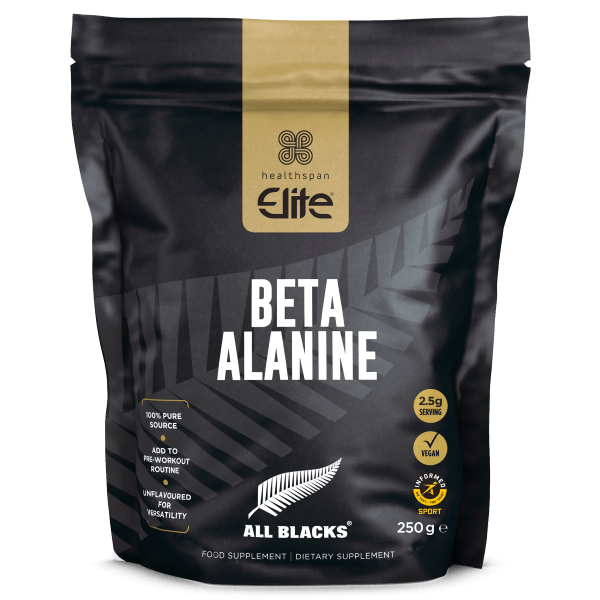Nigel Mitchell, Performance Nutritionist, provides an overview of beta-alanine, explaining the extensive use of the supplement and its practical application at Olympic and professional level.
What is beta-alanine and what does it do?
Beta-alanine is a sports nutrition supplement that genuinely works to support the performance of athletes. The problem is, it is often misused, so that potential benefits are mitigated by inappropriate application. This article aims to provide information about the supplement's potential uses and practical applications, based on experience of real-world use with world-class athletes.
History of beta-alanine
I was first introduced to beta-alanine in the mid 2000s by Professor Roger Harris, a sports biochemist; he was part of the team that first researched creatine. Professor Roger and his team were interested to see if muscle carnosine could be increased by dietary manipulation.
Carnosine acts as an intra-cellular (inside the cell) buffer to the acid produced during strenuous exercise. The body uses multiple buffering systems; for example, sodium bicarbonate (produced by the kidneys) works outside the cell and neutralises the acid as it leaves.
Carnosine is a histidine dipeptide (this means beta-alanine and histidine joined together). Professor Roger had worked out that the limiting amino acid was the beta-alanine, so that supplementing with it should result in increased carnosine.
At that time beta-alanine supplements were difficult to find, so the original research, which demonstrated that increasing dietary beta-alanine resulted in increased muscle carnosine, used poultry as the beta-alanine source.1
Beta-alanine effects
Professor Roger demonstrated that by consuming extra beta-alanine (4g a day for four weeks) you can increase the muscle carnosine content. This led to performance research that showed improvements in high-intensity exercise.2
Initially, due to the lack of quality beta-alanine supplements, I used beta-alanine diets with athletes – this included foods high in beta-alanine such as turkey and prawns. As the research started to be published there was an increase in sport-specific products.
The first athletes were short track speed skaters, followed by team pursuit track riders. At the time using beta-alanine was very much cutting-edge, but it's now standard practice.
Find out more about beta-alanine

Beta-alanine: use in sport and exercise
Wendy Martinson OBE explains how beta-alanine can be used in sport, what effects it has on the body, safety and side effects and why nutritionists may want to include it in their plans.
Find out more
Takeaway points on beta-alanine
- Loading: you must load on beta-alanine. Just taking it before exercise will not improve performance.
- By taking 4g/day of beta-alanine it takes about 4 weeks to load.
- Beta-alanine can cause parathesis (itching, in particular the scalp and lips). This can be very uncomfortable for some people. This is why it is important not to exceed the recommended dosage.
- I tend to see beta-alanine supplementation as more of a training aid than for competition, in that it helps athletes to recover and deal with high-intensity repeated exercise that results in high levels of lactate formation. For this reason athletes should plan to load on it about four weeks before the targeted training block, not just before competition.
- Plant-based diets tend to be lower in beta-alanine, so I tend to suggest that athletes who follow a predominately plant-based diet consider supplementation.
- Some athletes will combine both acute sodium bicarbonate supplementation with beta-alanine.
If you are looking at including or already include repeated high-intensity exercise in your routine, it may also be worth including beta-alanine supplementation.

Elite All Blacks Beta Alanine
100% pure source of beta-alanine to supplement your pre-workout routine
- Pure, unflavoured source of the amino acid beta-alanine
- Plays a vital role in the production of carnosine, which buffers lactic acid
- Suitable for plant-based diets







